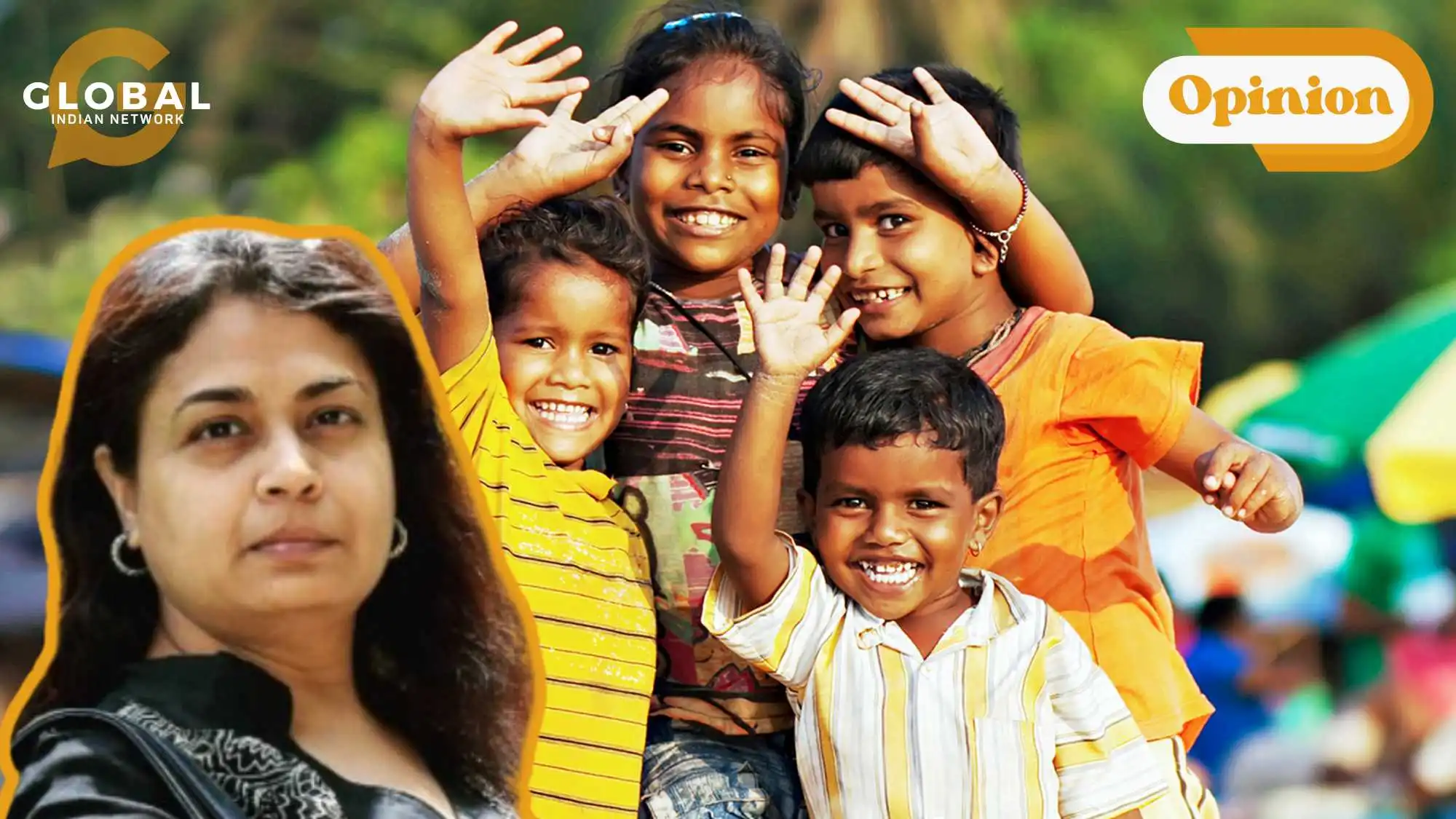Image by the Author using AI
Every single human being is chasing the elusive ‘happiness’ rainbow. Some seem to have achieved it, whereas others are in a make-believe world. Most are sure they will not. Is it possible to catch happiness and hold it tightly for as long as we wish?
The short answer is NO. The long-term answer could be a semi-no or a semi-yes. It all depends on you.
Yes, you and I had no choice over the country where we were born. Nor could you have chosen your parents or the background. But you have something most precious—the present. Consider that the biggest gift you have. And move on. After all, who doesn’t have limitations? By the way, the ‘grass is not always greener on the other side’.
Happiness Viewpoints
Throughout history, many philosophers and thinkers have propounded theories about achieving happiness. Some of them include:
Aristotle, the ancient Greek philosopher, posited that happiness is the ultimate goal of human existence and can be achieved by living a virtuous life.
Immanuel Kant focused on moral duty and the importance of synchronisation with universal principles for a meaningful life.
Bhagavad Gita is a sacred Hindu scripture that explores the path to happiness through selfless action and spiritual devotion.
Ayurvedic Concepts: Ayurveda, the ancient Indian system of medicine, describes the concepts of "sukhswarup" (happy life) and "dukhswarup" (unhappy life). It intertwines happiness with health and balance in life.
Tripartite Lifestyle: Some ancient Indian perspectives, as seen in texts like Hitopadeśa, depict a tripartite lifestyle. This involves a balanced pursuit of hedonic aspects like wealth (artha) along with other dimensions.
Karma and Well-Being: In Indian thought, values like dharma (righteous duty), artha (material well-being), and moksha (spiritual liberation) contribute to overall well-being and happiness. The concept of karma, integral to Indian philosophy, is seen as influencing one's state of happiness.
Holistic Well-being: Ancient Indian thoughts emphasise the interplay of physical, mental, and spiritual dimensions for well-being. This holistic approach suggests that individual actions, desires, perceptions, and intellectual pursuits contribute to different forms of happiness.
Buddha: The founder of Buddhism believed that happiness can be achieved by following the Eightfold Path, which includes right understanding, right intention, right speech, right action, right livelihood, right effort, right mindfulness, and right concentration.
Confucius: The Chinese philosopher believed that happiness was achieved through the cultivation of virtues such as benevolence, righteousness, and wisdom.
Swami Vivekananda: He proffered that the ultimate goal of human life is not happiness but freedom. He emphasised the cultivation of virtues such as courage, wisdom, and justice to achieve inner freedom and self-realisation. According to Vivekananda, happiness is not a destination but a journey that requires inner transformation and self-awareness.
Jean-Jacques Rousseau: The French philosopher believed that happiness is achieved by living in harmony with nature and society.
Dalai Lama: The spiritual leader of Tibet believes that happiness can be achieved by cultivating compassion, kindness, and wisdom.
Sadhguru is a modern-day spiritual leader who emphasises the importance of inner well-being and self-realisation in achieving happiness. Becoming a joyful being is the first and most fundamental responsibility of a human being.
Image by Author created with AI
Happiness Measure
What makes one happy may not be the source of happiness for another.
That is the basic premise from which we will start.
It is the place where you are now and where you want to reach. As an individual, the decision is centered around you. But what about nations? What do the reports on Gross National Happiness say?
Economic Metrics and Limitations
Gross domestic product (GDP) is the monetary value of all finished goods and services produced within a country's borders during a specific period (usually a year). It provides a comprehensive measure of a nation's economic activity.
GDP has been the primary measure of a nation's progress. Criticisms arose as GDP did not account for the overall well-being and happiness of citizens.
The concept of gross domestic product emerged during the Bretton Woods conference in 1944, where economists devised a basic concept to address issues related to taxation and economic warfare between the Dutch and the English.
It became a fundamental measure of a nation's economic activity, especially gaining prominence after the Great Depression and World War II. The invention of GDP is often attributed to Keynesian economists (associated with macroeconomic theories and models) responding to the needs of war mobilisation during World War II, providing a comprehensive measure of the value of all goods and services produced within a country during a specific period.
Gross Domestic Product (GDP)
GDP has several limitations that affect its ability to reflect a country's economic well-being comprehensively.
Exclusion of Non-Market Activities: GDP only considers market activities and excludes non-market activities like household work and volunteer services.
Ignorance of Income Distribution: GDP does not account for income distribution, potentially overlooking income inequality within a population.
Neglect of Environmental Costs: Environmental costs associated with economic growth, such as pollution and resource depletion, are not factored into GDP calculations.
Neglect of Quality of Life: Factors that contribute to citizens' quality of life, such as healthcare, education, and social services, are not measured by GDP.
Exclusion of the Underground Economy: Illegal activities in the underground economy are not considered in GDP calculations.
To obtain a more comprehensive understanding of a country's economic well-being, it is important to use GDP in conjunction with other indicators that encompass broader societal dimensions. While GDP provides valuable insights into economic activity, supplementary measures are necessary to capture the full picture of well-being.
History of Gross National Happiness
The concept of Gross National Happiness (GNH) originated in Bhutan in the early 1970s with the 4th King, Jigme Singye Wangchuk. It prioritises well-being and happiness over economic metrics like Gross Domestic Product (GDP). The global recognition of GNH gained momentum in 2011 with a UN resolution urging nations to measure happiness and well-being.
Bhutan's Prime Minister, Jigme Thinley, and the UN Secretary-General convened a meeting in 2012, leading to the World Happiness Report and the declaration of March 20 as the International Day of Happiness. Bhutanese officials continue to promote GNH at the UN and globally, emphasising its holistic approach to sustainable development.
In July 2011, the UN General Assembly adopted the resolution Happiness: Towards a Holistic Definition of Development. In April 2012- the first UN high-level meeting called Wellbeing and Happiness: Heralding a New Economic Paradigm was chaired by the then-UN Secretary-General Ban Ki-moon and Bhutan’s Prime Minister.
The first World Happiness Report was released on April 1, 2012, which outlined the state of world happiness, causes of happiness, misery, and policy implications. Since 2016, the report has been released around March 20 to coincide with the UN's International Day of Happiness.
The World Happiness Report is compiled by the UN Sustainable Development Solutions Network, with data primarily collected from the Gallup World Poll. Conducted annually, the poll is a comprehensive survey involving around 1,000 individuals per country, covering over 160 countries and representing over 98% of the global adult population. The survey employs a random selection process, focusing on non-institutionalized citizens aged 15 and above to ensure statistical comparability. This extensive data collection from diverse regions serves as the foundation for the annual World Happiness Report, providing valuable insights into global well-being.
A crucial aspect of survey methodology is consistency in questioning. Regardless of their diverse linguistic backgrounds, each respondent is asked the same set of questions in their native language. This standardised approach aims to provide reliable and comparable data on subjective well-being and happiness across different countries and cultures.
Happy Nations
As per the last World Happiness Report for 2022, Finland is the happiest country in the world (for the sixth time in a row!). Afghanistan (146 of 150 countries) was the unhappiest one.
Countries are increasingly exploring happiness and well-being indices as complements or alternatives to traditional economic metrics.
In conclusion, the pursuit of happiness globally has evolved from a philosophical ideal to a practical consideration in policy-making, with Bhutan's GNH serving as a pioneering model. The relevance of happiness as a metric for a nation's progress lies in its ability to capture the multifaceted aspects of well-being beyond economic parameters. This shift signifies a broader understanding of development that prioritises the overall quality of life for citizens.
Bhutan’s Happiness Indicators
The GNH concept has inspired a modern political happiness movement and has been recognised globally, with the United Nations passing a resolution placing “happiness” on the global development agenda. The GNH Index is a comprehensive approach to measuring the collective happiness and well-being of a nation, encompassing various aspects of individuals' lives and societal progress.
Bhutan has integrated GNH principles into policymaking to achieve sustainable and equitable development.
- The GNH Index is periodically measured through surveys, reflecting the collective well-being of the population.
- GNH considers social, cultural, environmental, and psychological factors that GDP overlooks.
In conclusion, the pursuit of happiness globally has evolved from a philosophical ideal to a practical consideration in policy-making, with Bhutan's GNH serving as a pioneering model. The relevance of happiness as a metric for a nation's progress lies in its ability to capture the multifaceted aspects of well-being beyond economic parameters. This shift signifies a broader understanding of development that prioritises the overall quality of life for citizens.
Thoughts to Ponder
Here are some thoughts from experts:
Simon Kuznets was an American economist and statistician who received the 1971 Nobel Memorial Prize in Economic Sciences for his empirically-founded interpretation of economic growth, which led to new and deepened insight into the economic and social structure and process of development. He developed GDP to measure national income but recognised its limitations in measuring human welfare. Alternative measures are needed to account for environmental damage, resource extraction, and human capabilities.
As the Nobel prizewinner for economics, Joseph Stiglitz, concluded: “For much of the world, globalisation, as it has been managed, seems like a pact with the devil. A few people in the country become wealthier; GDP statistics, for what they are worth, look better, but ways of life and basic values are threatened.”
In his bestselling economics handbook, Paul Samuelson dryly noted that a country’s GDP goes down when a man marries his maid. This is because non-market services are not accounted for, highlighting the limitations of GDP as a measure of economic growth and well-being.
Diane Coyle, an economist and author of "GDP: A Brief But Affectionate History," highlighted concerns about environmental damage and unsustainable rates of natural resource extraction, suggesting the need for a human development index (HDI) that measured capabilities rather than income.
Robert Kennedy, the Third President of America, memorably noted that a country’s gross domestic product measures ‘everything except that which makes life worthwhile’.
Critiques of GNH as a Metric for Happiness
The measurement of happiness faces challenges due to its subjective nature and the diverse factors that contribute to an individual's well-being. Cultural variations make it difficult to create a universal metric, as happiness is perceived and expressed differently across cultures. Psychological factors such as adaptation and social comparisons further complicate the understanding of happiness. It is a complex and dynamic phenomenon that cannot be easily quantified.
Critiques of GNH as a Metric for Societal Progress
Critics of Gross National Happiness (GNH) argue that it is subjective and difficult to compare across different societies. They also raise concerns about cultural bias and question the practicality of implementing GNH on a broad scale. Additionally, some argue that GNH places less emphasis on economic indicators, potentially overlooking economic growth and development.
Finally, critics contend that the GNH's emphasis on Bhutanese values may limit its relevance and applicability as a global metric for societal progress. Despite these criticisms, GNH continues to be an important metric for measuring societal progress in Bhutan and other countries around the world. It is worth noting that GNH is not meant to replace other metrics, such as Gross Domestic Product (GDP), but rather to complement them by providing a more holistic view of societal progress.
Comparisons with Other Nations and Their Happiness Indices
The World Happiness Report ranks countries based on factors like income, social support, life expectancy, freedom, trust, and generosity. Nordic countries consistently score high, but factors contributing to happiness vary globally. Different countries employ diverse methodologies, reflecting cultural values. High happiness indices emphasise balanced approaches and the absence of a universal solution for measuring societal progress.
In summary, the subjectivity of happiness, critiques of GNH, and international comparisons underscore the complexities of measuring well-being. While GNH has its merits, the global discourse on happiness measurement reveals the need for nuanced, culturally sensitive approaches to understanding and enhancing societal progress.
The ‘Secret Sauce’ to Happiness
Why do some countries routinely clinch top positions in the World Happiness Report while others fail? When you look into what sets these happiest countries in the world apart from the rest of the world, several common themes emerge.
Strong social support: The happiest countries in the world have robust social support systems, which include healthcare, education, and unemployment benefits. This safety net ensures that citizens can face life's challenges with confidence.
Freedom and trust: High levels of freedom and trust in government and fellow citizens contribute to a sense of security and well-being.
Work-life balance: Most of the happiest countries in the world prioritise work-life balance, with shorter workweeks, longer paid vacations, and family-friendly policies.
Connection to nature: Access to beautiful natural landscapes and outdoor activities often plays a role in the overall happiness of the population.
Equality: Low levels of income inequality and a strong sense of social equality contribute to happiness.

Other Happiness Indices
There are several other happiness indices used in addition to the Gross National Happiness (GNH) Index. Here are some of them:
World Happiness Report: The World Happiness Report is a survey of the state of global happiness that ranks countries by their happiness levels.
Happy Planet Index: The Happy Planet Index measures the well-being of countries based on three factors: well-being, life expectancy, and ecological footprint.
Better Life Index: The Better Life Index is an interactive tool that allows users to compare well-being across countries based on 11 dimensions of well-being, including housing, income, and work-life balance.
Human Development Index: The Human Development Index is a composite measure of human development that takes into account factors such as life expectancy, education, and income.
OECD Better Life Index: The OECD Better Life Index is an interactive tool that allows users to compare well-being across countries based on 11 dimensions of well-being, including housing, income, and work-life balance.
Examination of India's Performance in Global Happiness Rankings
India's Rank and Comparison
India's global happiness rank varies across reports, with the World Happiness Report 2023 placing it at 126 out of 146 countries. In the 2023 report, India was ranked at No. 126, up from No. 136 in 2022.
Comparison with neighbouring countries like Nepal, Bangladesh, and China reveals a lower happiness index for India. Nepal (78), Bangladesh (99), Pakistan (108), Bhutan (not mentioned), and Sri Lanka (112) managed to get better ranks in the list than India.
Image by Author created with AI
Factors Influencing India's Happiness Index
Income: Economic factors significantly impact happiness. Disparities in income distribution contribute to variations in well-being.
Social Support: Strong social networks and community ties positively influence happiness.
Life Expectancy: Health indicators, including life expectancy, play a role in determining overall happiness.
Freedom: The freedom to make life choices contributes to an individual's sense of well-being.
Trust in Government: Perceptions of government trust affect societal contentment.
Government Initiatives
Social Services Improvement: Initiatives aimed at enhancing social services, combating poverty, and improving healthcare play a crucial role in contributing to overall happiness within a society.
Combatting Poverty: Government efforts focused on alleviating poverty and creating enhanced economic opportunities have a direct impact on the happiness levels of the population.
Well-being Policies: Implementation of comprehensive well-being policies, addressing aspects such as holistic education and employment, contributes significantly to fostering happiness among individuals and communities.
Societal Aspects Impacting Happiness
Cultural Factors: Cultural dynamics and traditions influence happiness perceptions.
Educational Opportunities: Access to quality education correlates with improved well-being.
Employment Opportunities: Employment and job satisfaction contribute to overall happiness.
Social Equality: Efforts towards social equality and inclusivity positively impact societal happiness
In summary, a combination of economic, social, and governance factors influences India's happiness ranking. There is a need to address rapid urbanisation and congestion in cities, declining incomes and unemployment, unfavourable perceptions about corruption in the country, rising costs of healthcare, women’s safety, environmental pollution, and poor mental well-being. Income disparities, social support, government initiatives, and societal aspects collectively shape the nation's well-being.
Dynamics of Economic Growth, Happiness, and Well-being
Economic growth is linked to happiness, but the relationship is complex, showing diminishing returns as income rises. Challenges in economically successful countries like Japan and South Korea highlight the impact of non-economic factors and societal pressures on happiness. Socio-economic factors, including quality of life, social support, and government policies, play a crucial role in overall well-being. Happiness stems from a holistic approach, necessitating consideration of both economic and non-economic dimensions for enhanced quality of life
Image by Author created with AI
Toward a Happy India: Feasibility, Policy Changes, and Global Lessons
Feasibility of a "Happy India"
Diverse Landscape: Acknowledge India's socio-cultural diversity, requiring tailored approaches for different regions and demographics.
Economic Growth: Balance the pursuit of happiness with sustainable economic growth, considering India's developmental challenges.
Potential Policy Changes and Societal Shifts
Education Reform: Integrate holistic well-being education, emphasising emotional intelligence and mental health awareness.
Healthcare Accessibility: Ensure affordable and accessible healthcare, addressing both physical and mental well-being.
Social Equality: Implement policies fostering inclusivity, reducing societal disparities, and promoting equal opportunities.
Environmental Sustainability: Prioritize eco-friendly policies for a sustainable and harmonious relationship with nature.
Work-Life Balance: Encourage work policies that promote a healthy work-life balance, reducing stress and burnout
Learning from International Examples
Nordic Model: Study the Nordic countries' emphasis on social welfare, gender equality, and work-life balance.
Bhutan's GNH Index: Learn from Bhutan's Gross National Happiness (GNH) Index, incorporating happiness metrics into policymaking.
New Zealand's Wellbeing Budget: Explore New Zealand's approach to framing budgets around well-being objectives.
UAE's Ministry of Happiness: Understand the UAE's dedicated focus on happiness at a national level.
Applying Lessons to the Indian Context
Cultural Sensitivity: Tailor international practices to India's diverse cultural context.
Community Engagement: Foster community-driven initiatives with active participation from local communities.
Digital Connectivity: Leverage technology for widespread dissemination of well-being initiatives.
Government-Citizen Collaboration: Establish platforms for collaborative policymaking, ensuring citizen input and satisfaction.
Key Points Summarization
Pursuing an idealised version of happiness, influenced by societal and social media pressures, exposes individuals to pitfalls. The study on health systems in low- and middle-income countries acknowledges improvements but emphasises challenges in achieving sustainable health outcomes.
Feasibility Challenges
Societal Influences: The societal narrative and influence, as discussed in the Times of India article, may hinder the genuine pursuit of happiness.
Health System Complexities: Despite progress, challenges persist in ensuring high-quality health systems, impacting overall well-being.
Positive Outlook
Awareness and Resilience: Raising awareness about genuine happiness and building societal resilience can mitigate the negative effects of chasing an idealised version of happiness.
Continued Health Efforts: Ongoing efforts to enhance health systems, coupled with a focus on preventive healthcare, can contribute to the well-being of the population.
In short, while challenges exist, fostering a culture of genuine happiness and addressing health system complexities can contribute to making a happy India a plausible reality. It requires a holistic approach encompassing societal shifts, health system enhancements, and individual awareness.
Conclusion
Should you give the key to your happiness to others or to the government? Yes, partly. But only to the smallest extent, considering survival logistics. Ultimately, whether anyone takes the trouble to make you happy or not is not entirely your business. Your goal, in the philosophical sense, is to make your emotions and thoughts work for you and not against you.
You might want to consider the path to happiness by participating in activities that matter to you. Take a close look at how it translates to the well-being of those close to you, the contribution to nation-building, and connecting global dots to the extent possible.
Thereby, you have the highest possibility of a life lived well.
It makes me happier to have completed this piece. This is the work I worship. If humans perform their duties well, they are well on their way to the elusive rainbow.
I have pitched in to contribute to achieving ‘happiness’ for myself. I hand over the baton to you. Will you take it forward?
Collectively, we can ‘Make India Happy Again’!
Let us know what you think in the comment section below. If you want us to publish your opinion piece, mail it to us at larra@globalindiannetwork.com.











This stage is fabulous. The magnificent information uncovers the publisher’s excitement. I’m shocked and envision additional such extraordinary presents.